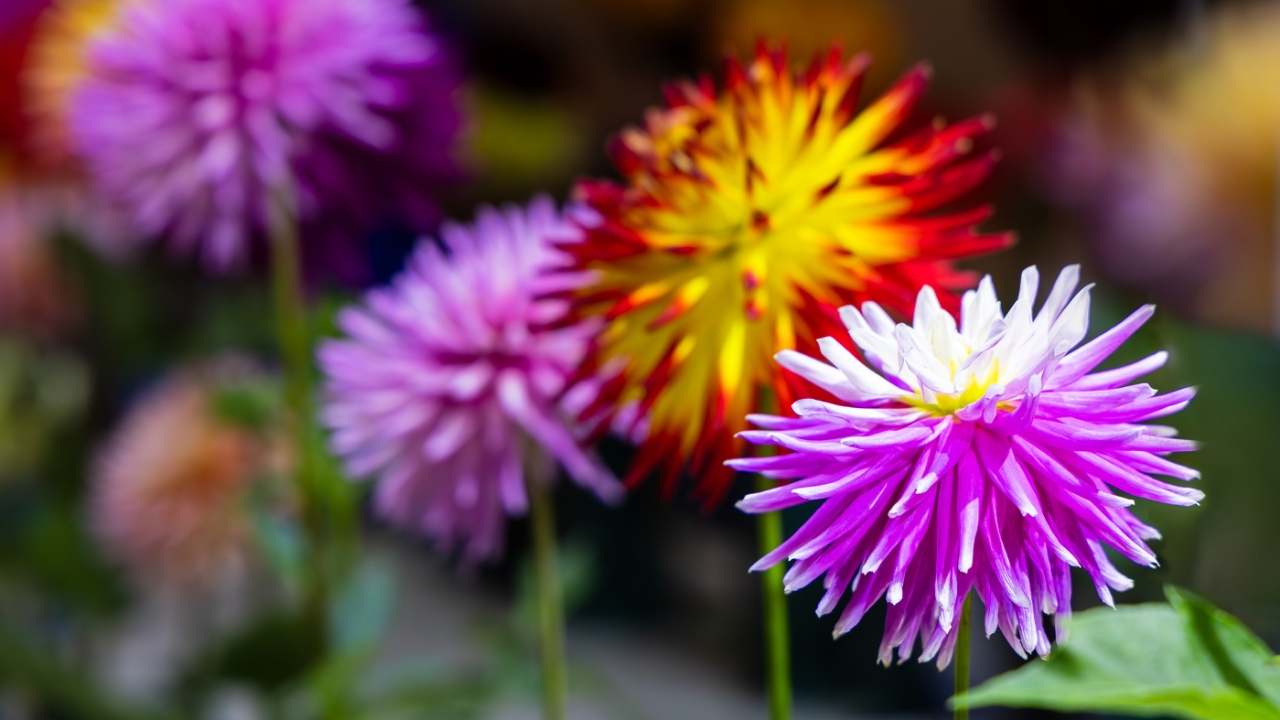

Smart Gardener
O, Tannenbaum: Cone-Shaped Conifers for Your Front Yard
'Tis the month for the holiday lights to come down from the attic and to go up on the trees outside, which makes it a fine time for smart gardeners to think about conifers.
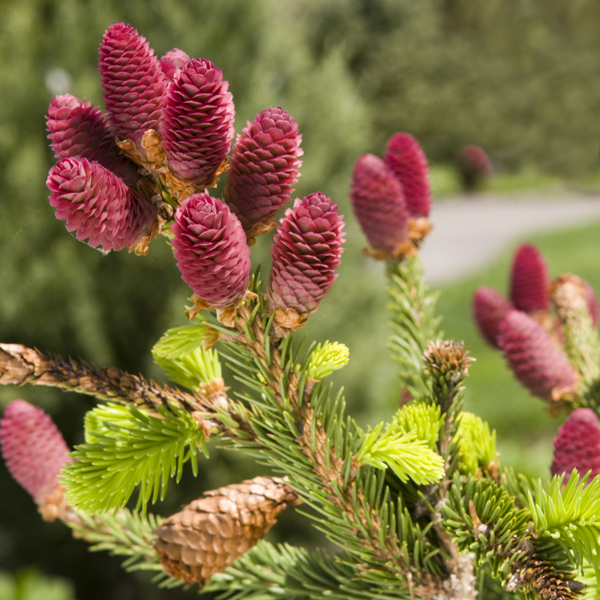
Norway spruce (Picea abies 'Acrocona') provides year-round interest in the garden.
With leaves long gone from deciduous trees and perennials sticklike and bare, December is a good month to assess your yard/garden hardscape. Pyramidal or cone-shaped conifers are iconic this time of year, and they can anchor the winter garden in a way that other shapes can't.
Might a pyramidal conifer give the overall structure of your garden a much needed lift? Would a cone-shaped conifer or two keep the yard from looking empty and brown?
Conifers are commonly called evergreens, and "ever green" is just one of the benefits they bring to midwestern yards: many, many conifers are reliably hardy, carefree, and able to take whatever Mother Nature throws at them. New cultivars are constantly being introduced, with breathtaking variations in texture, form, and color.
First things first for your yard
Think about the conditions that most conifers prefer.
- Full sun is the rule for all but hemlocks, some yews, and some arborvitae.
- Slightly acidic soil is key. At the Garden, our soil regularly tests 7.6 on the pH scale, so we amend with peat and pine bark fines whenever planting a conifer.
- Well-drained soil is a must: conifers don't like wet conditions. (That's one reason our Dwarf Conifer Garden is on a hill.)
- Conifers prefer to stay in one place—they don't like to be moved. Plan to position them according to their ultimate height and width.
That last point is important—Chicago's neighborhoods are filled with large-scale conifers planted too close to smaller-scale homes. Today's many dwarf conifer options offer sizes to fit every space in the yard—plus lots of interesting cone shapes. Winter's a great time to visit the Dwarf Conifer Garden and other gardens to compare how conifers are used and to consider the differences in color, shape, and texture.
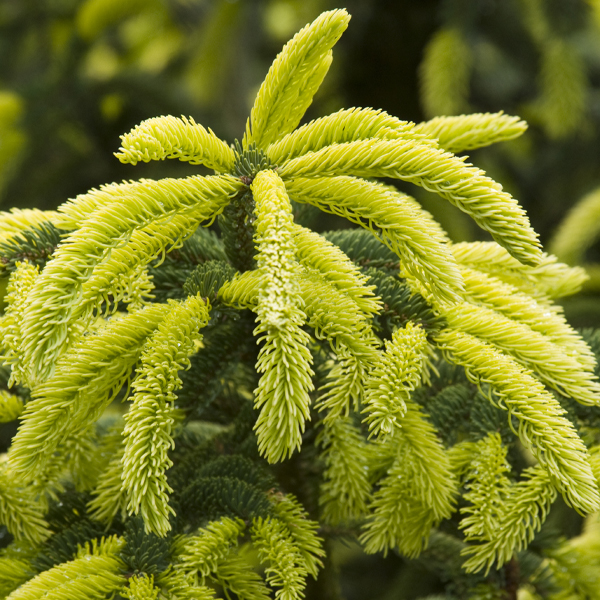
Soft new summer growth of Picea glauca 'Spruce Lane' is impossible not to touch.
The Classic with a Twist
The dwarf Alberta spruce (Picea glauca 'Conica') is a classic Chicago conifer: dense with needles and wonderfully hardy, with a perfect cone shape. Rainbow's End® (Picea glauca 'Rainbow's End') is a new introduction from Oregon's Iseli Nursery that puts a new spin on the classic with a pointed, narrower shape and color that starts out green, but then goes creamy yellow with new summer growth—stunning against the earlier dark green foliage. Gentle on the fingers, it's great for a yard with kids. Medium height, up to 10 feet.
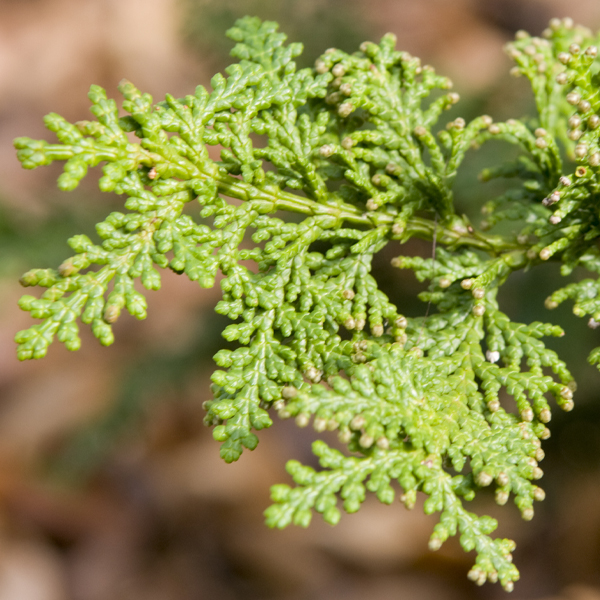
Cultivars of Hinoki false cypress (Chamaecyparis obtusa 'Nana Gracilis').
The Chicago Blues
That's blues as in blue spruce. In grade school, you may have learned how to identify a spruce: Spruce needles are Singular. Look at a branch: if the needles are carried individually, it's usually a spruce. Sester dwarf (Picea pungens 'Sester Dwarf') has a harder needle that stands up to snow—there's nothing like the placid stateliness of this pale Colorado blue spruce layered with fresh white snow in the yard. Full-skirted, it grows to only one-quarter of the size (6 feet) of the overwhelming spruce seen in so many Chicago yards.
The Suggestion of a Cone
The foliage of Hinoki false cypress (Chamaecyparis obtusa) can stump the average gardener—is it a needle? A leaf? Threadlike cockscomb fans whorl around the twisting branches of 'Nana Lutea', a 6-foot cultivar with yellow-edged foliage that glows in the garden. It's an artful riff on a cone, with depth and dimension.
The Star of the Show
Korean fir (Abies koreana) can be a showstopper in the front yard for several reasons:
- Like all firs, its needles have a distinct, light strip on the underside (a tip for easy fir identification). Cultivar 'Silver Show' has recurved needles that are markedly silver underneath—an effect that's beautiful both close-up and from afar. It grows up to 6 feet tall in 10 years.
- Korean fir cones stand upright. And they're purple. And how cool is that?
- Korean firs are light and pretty cone shapes in the garden as compared to some of their stouter, more solid conifer cousins. Cultivar 'Silver Star' is a good example—a little taller and a little skinnier, it's quite chic in the discriminating yard or garden.
A Cone with Character
An unusual name for a cone with an unusual, irregular shape, de Ruyter Serbian spruce (Picea omorika 'de Ruyter') is a great stand-alone or focal point tree. It has fascinating needle color, too—some needles are blue, some needles are green, so the tree has an interesting, variegated look. Classic Christmas tree shape, up to 15 feet, but think of it as sculpture for your garden.
The Great Adapter
Typically, white firs (Abies concolor) don't care for Chicago's heavy clay soils and hot, humid summers—instead, they prefer cooler, moister climes. But the Compacta dwarf concolor fir has triumphed over clay here. Climb the steps up from the English Oak Meadow to the Dwarf Conifer Garden and you'll see one on your left—its bursts of gray-blue needles and smaller size makes it a perfect fit for urban yards. It grows 3 to 6 feet in 10 years.
Arborvitae Revitalized
Eastern arborvitae (Thuja occidentalis) has long been Chicago's go-to conifer for its flattened fans of scale-like needles and ability to tolerate a bit of shade. While 'Techny' is a huge old favorite (literally huge: it can reach 50 feet in height), its littler brother Technito™ stays in the 10-foot range, just right for front yards (and our parking area, where we just planted several this fall). Denser than most arborvitae, it has good overall green color.
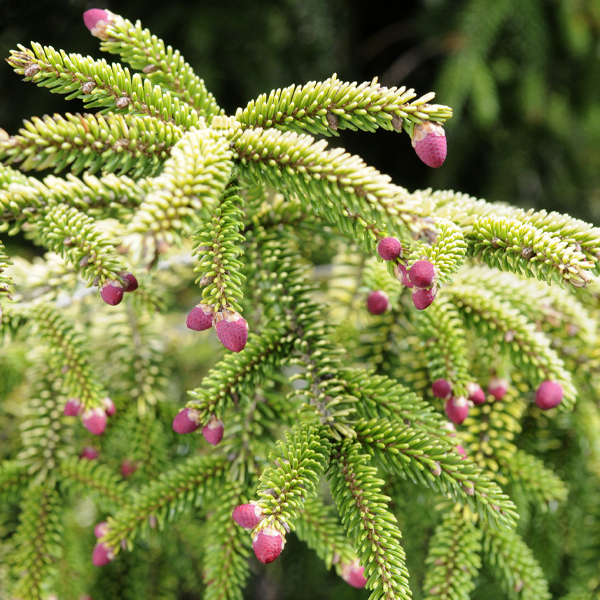
Sprucing up in spring: the purple buds of Picea orientalis 'Skyland' in May
Short Needles, High Luster
Orientals (Picea orientalis) have the shortest needles of all spruces—but 'Skylands' makes up for that with a June show of purple buds and lustrous, bright yellow-tipped needles that give the tree a brilliant, sunny look. During the course of the season, the needles age and gradually go gold. Phenomenal planted next to a weeping blue spruce. Not for the short on space: it can reach 35 feet.
Karen Zaworski is a garden writer and photographer who lives and gardens in Oak Park, Illinois.

